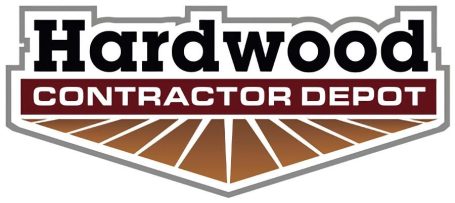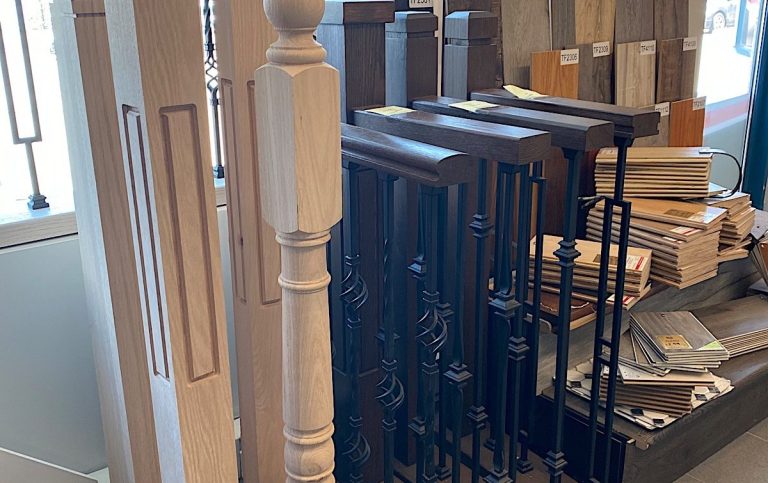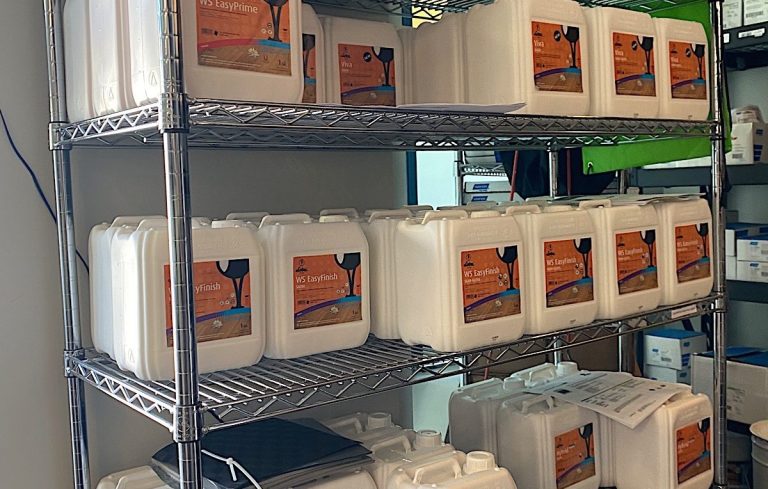
Hardwood Contractors Depot in Mississauga, you're in for a great experience, especially if you're looking for high-quality flooring options. Here are some things you might expect and tips to make the most out of your visit: Wide Selection: Hardwood Contractors Depot likely offers a wide range of hardwood, engineered, laminate, and vinyl flooring options. You can expect to find various wood species, finishes, and plank sizes. Whether you're looking for something traditional like oak or maple or something more exotic, there's a good chance you'll find it here. Knowledgeable Staff: Our staff can provide insights on the different types of flooring, durability, maintenance tips, and suitability for other areas of your home or office. Samples and Displays: We have samples and displays, allowing you to see and feel the flooring before deciding. Take advantage of this to compare different options and see how they might look in your space. Installation Advice: If you plan to install the flooring yourself, don't hesitate to ask for tips and instructions. If you prefer professional installation, the depot may offer these services or be able to recommend trusted contractors. Special Deals or Promotions: Check for any ongoing promotions or discounts. Sometimes, you can find great deals on discontinued lines or bulk purchases. Maintenance Products: Apart from the flooring, we also sell maintenance products. It's a good idea to pick up cleaners, polishes, or repair kits designed for all types of floors. Budget and Quality Considerations: Be clear about your budget and quality preferences. Flooring is a significant investment, and the staff can help you find the best options within your budget. Measurements and Estimates: If you know the measurements of the area where you plan to install the flooring, bring them along. This information can help in getting a more accurate estimate of how much flooring you'll need and the cost. Enjoy the Experience: Choosing new flooring is exciting, so enjoy exploring different options and imagining how they will transform your space. Remember, the right flooring can significantly enhance the beauty and value of your property, so take your time to explore and choose the best option for your needs. WELCOME TO HARDWOOD CONTRACTOR DEPOT: Best Hardwood Floors at "The Best Price," period. Hardwood Contractor Depot is a Mississauga-located store and distributor of top-quality hardwood, engineered wood, laminate, vinyl flooring, and a massive selection of accessories and installation or finishing supplies. We serve the entire GTA. Retailers, building contractors, flooring installers, architects, and interior designers from Toronto and all over Ontario have been coming for service, advice, and prices unavailable from other suppliers. We offer unbeatable prices to serve homeowners, builders, and contractors to meet their ever-growing demand.
We will beat any competitors
Staircases
Staircases are essential architectural elements in many buildings, providing vertical movement between floors or levels. They come in various styles and designs, each serving functional and aesthetic purposes. Here's a detailed description of staircases, covering their types, components, materials, and design considerations:
Types of Staircases:
- Straight Stairs: These are the most common type, consisting of a straight flight of steps with no change in direction.
- L-shaped (Quarter-Turn) Stairs: These stairs have a 90-degree turn, often at a landing midway.
- U-shaped (Half-Turn) Stairs: These involve two parallel flights of stairs joined by a landing, creating a 180-degree turn.
- Spiral Stairs: These stairs rotate around a central pole, creating a spiral ascent.
- Circular or Curved Stairs: Unlike spiral stairs, these have a wider radius and are often used for elegant and grand architectural designs.
- Winder Stairs: Similar to L-shaped stairs but with pie-shaped steps at the turn instead of a flat landing.
- Cantilevered Stairs: Stairs that appear to float as they are anchored only at one end.
Components of a Staircase:
- Treads: The horizontal part of the stair on which you step.
- Risers: The vertical element between each tread.
- Stringers: The structural element that supports the treads and risers.
- Handrails: Rails to provide support and safety.
- Balusters: Vertical posts that support the handrail.
- Newel Posts: Larger posts at the bottom or top of the stairs that anchor the handrail.
Materials:
- Wood: Popular for its natural look, versatility, and warmth. Used in traditional and modern designs.
Design Considerations:
- Safety: Includes aspects like the height of risers, depth of treads, and the stability of handrails.
- Space: The amount of available space greatly influences the type of staircase that can be installed.
- Aesthetics: The design should complement the architectural style of the building.
- Building Codes: Must adhere to local building codes and regulations, which can dictate aspects like width, riser height, and tread depth.
Functionality vs. Aesthetics:
- Staircases can be purely functional, hidden away from the main areas, or designed as focal points, adding to the aesthetic appeal of a building.
In summary, staircases are much more than just a means to move between floors. They are significant design elements that contribute to the functionality, aesthetics, and overall flow of a building. The choice of a staircase's type, material, and design depends on the space's specific needs and the desired look and feel.
Contractors Materials
Wide Range of Materials: Expect a diverse selection of materials suitable for different types of flooring, including hardwood, laminate, vinyl, engineered wood, and possibly specialty materials like bamboo or cork.
Competitive Pricing: Unbeatable prices The supplier offers competitive pricing, possibly through bulk purchasing, special deals with manufacturers, or a low-price guarantee.
Quality Products: Even with low prices, quality is crucial, especially for flooring materials. Look for products that offer durability, aesthetic appeal, and good warranties.
Tools and Accessories: Besides flooring materials, the supplier may offer a range of tools and accessories necessary for floor installation, such as adhesives, underlayments, finishings, and installation kits.
Expert Advice: Good suppliers often have knowledgeable staff who can advise on the best materials for different projects, installation tips, and maintenance guidance.
Delivery Options: For contractors and large projects, convenient delivery options can significantly benefit. Check if the supplier offers delivery services and under what terms.
Special Offers and Bulk Discounts: For contractors and frequent buyers, look out for special offers, loyalty programs, or bulk discounts that can provide additional savings.
Showroom or Samples: Having a showroom or sample materials can be a great advantage, allowing you to see and feel the products before making a purchase decision.
Customer Service: Good customer service, including after-sales support, is essential in choosing a supplier for flooring materials.
Remember, while price is a significant factor, it's also essential to consider the quality of materials, the reputation of the supplier, and the specific needs of your flooring project.

Baseboards
Baseboards, or skirting boards or base moldings, are a type of trim used to cover the joint between the wall surface and the floor. They serve both aesthetic and functional purposes in interior design and construction. Here are key aspects of baseboards:
Purpose and Function:
- Aesthetic Enhancement: Baseboards provide a visual transition between the wall and the floor, adding a finished look to a room.
- Protection: They protect the bottom of the walls from scuffs, abrasions, and furniture bumps.
- Concealment: Baseboards can hide uneven edges or gaps between the wall and the floor and cover wiring or minor imperfections.
Materials:
- Wood: Traditional and most common, available in various species. It can be painted or stained.
- MDF (Medium Density Fiberboard): A cost-effective, durable option that’s easy to paint. Resistant to warping.
- PVC or Vinyl: Good for moisture-prone areas like bathrooms. Resistant to water and easy to clean.
- Polyurethane or Polystyrene: Lightweight and often used for decorative molding. Easy to install and moisture resistant.
Styles and Designs:
- Styles can range from simple and sleek to ornate and decorative, depending on the interior design.
- The height and thickness of baseboards can vary. Taller baseboards are often used in homes with high ceilings or for a dramatic effect.
Installation:
- Typically nailed or glued to the wall. The top edge is often caulked to seal gaps and create a seamless transition.
- Mitered cuts are used at corners to ensure a smooth, continuous look around the room.
Painting and Finishing:
- Baseboards can be painted to match or contrast with the walls. Semi-gloss or gloss paint is commonly used for ease of cleaning.
- Wood baseboards can be stained for a natural wood appearance.
Maintenance:
- Regular cleaning to remove dust and dirt.
- Easy to repaint or touch up when scuffed.
Matching with Other Trim:
- Often, baseboards are chosen to match or complement other trims in a room, such as door casings, window trims, and crown moldings.
Baseboards play a significant role in a room's overall look and feel. They are an integral part of interior design, bridging the transition between different surfaces and contributing to the cohesive aesthetic of a space. When selecting baseboards, consider the material, style, and overall design of your home to ensure they enhance the beauty and functionality of your rooms.
We need your consent to load the translations
We use a third-party service to translate the website content that may collect data about your activity. Please review the details in the privacy policy and accept the service to view the translations.


